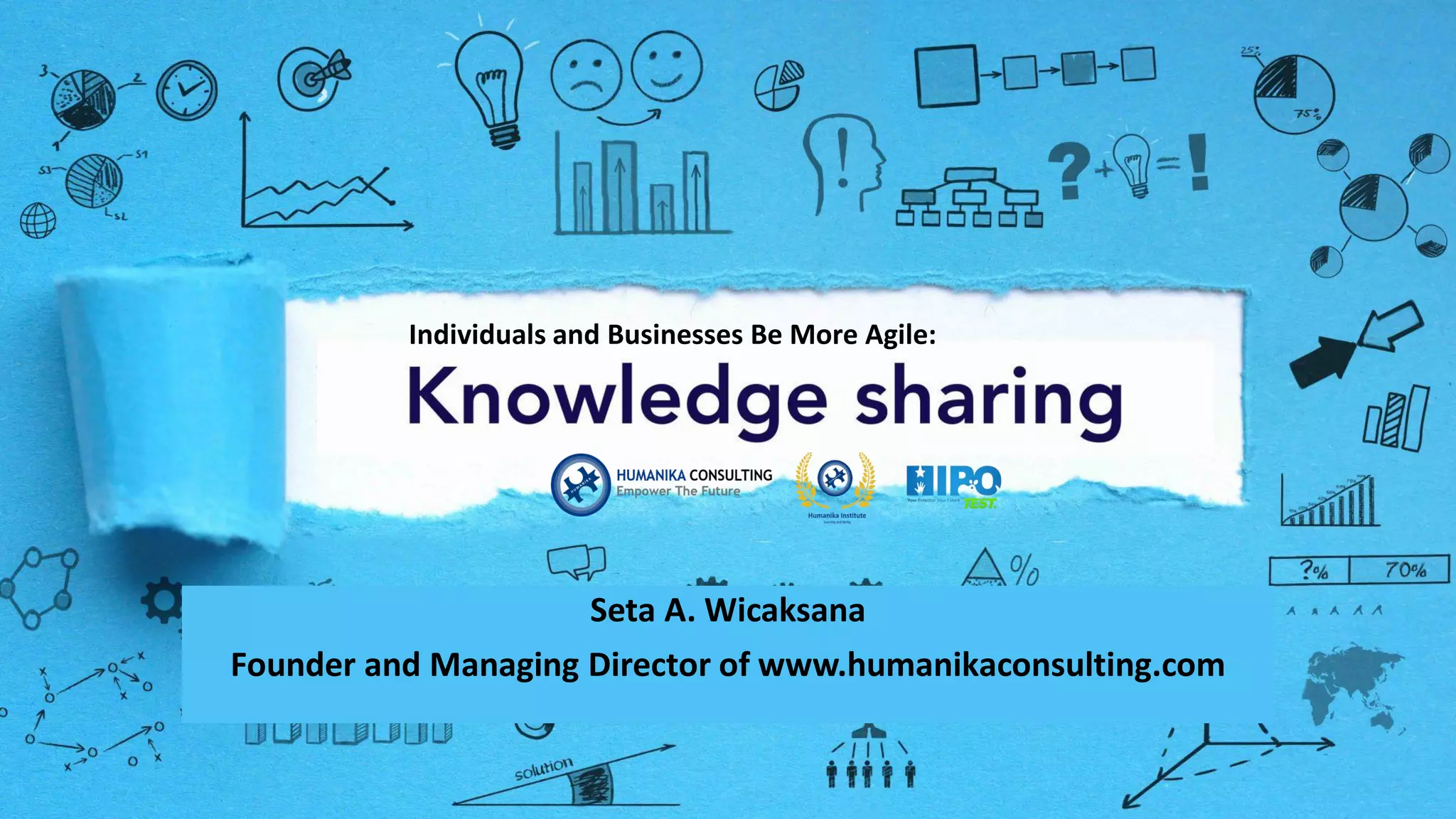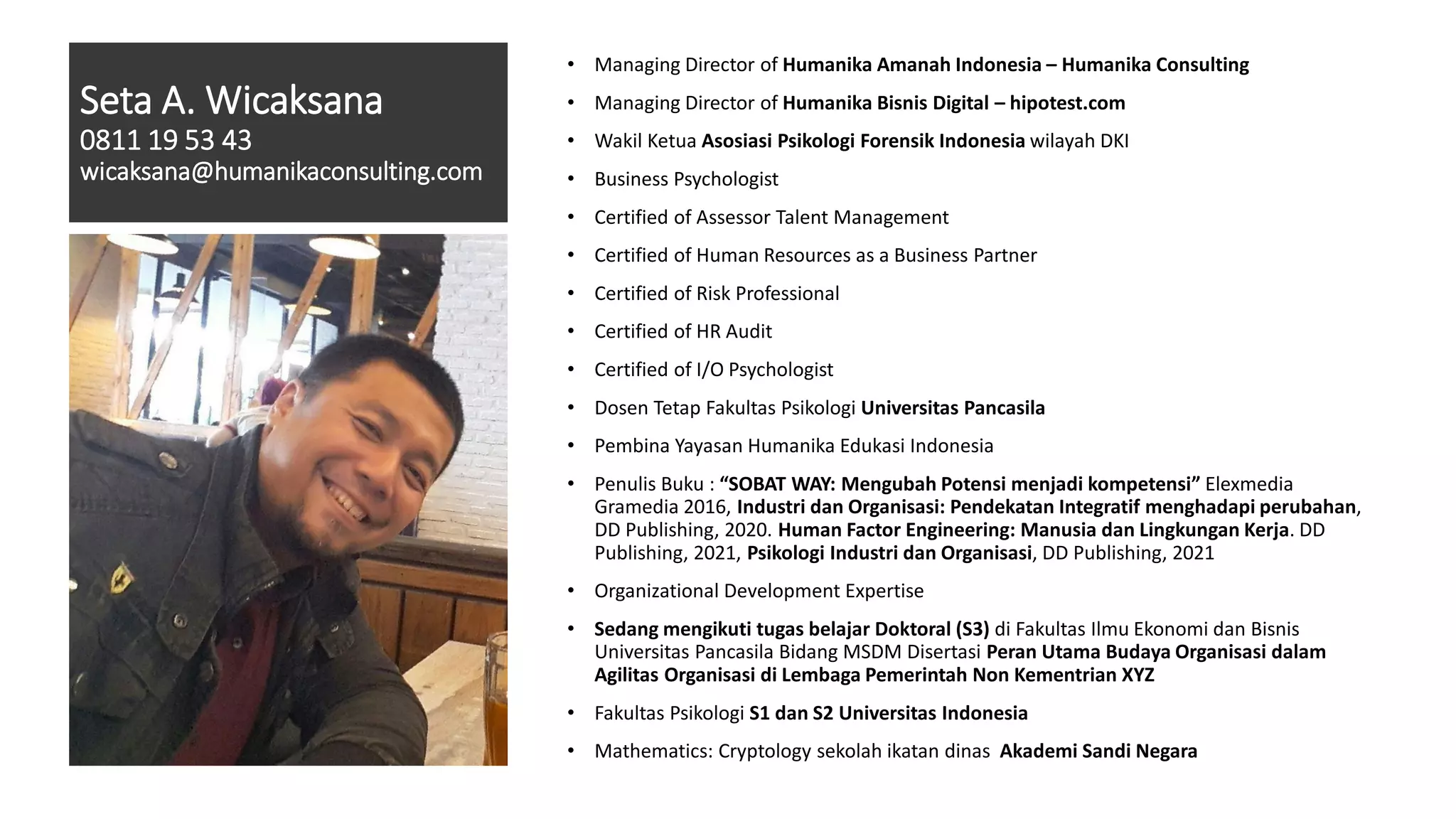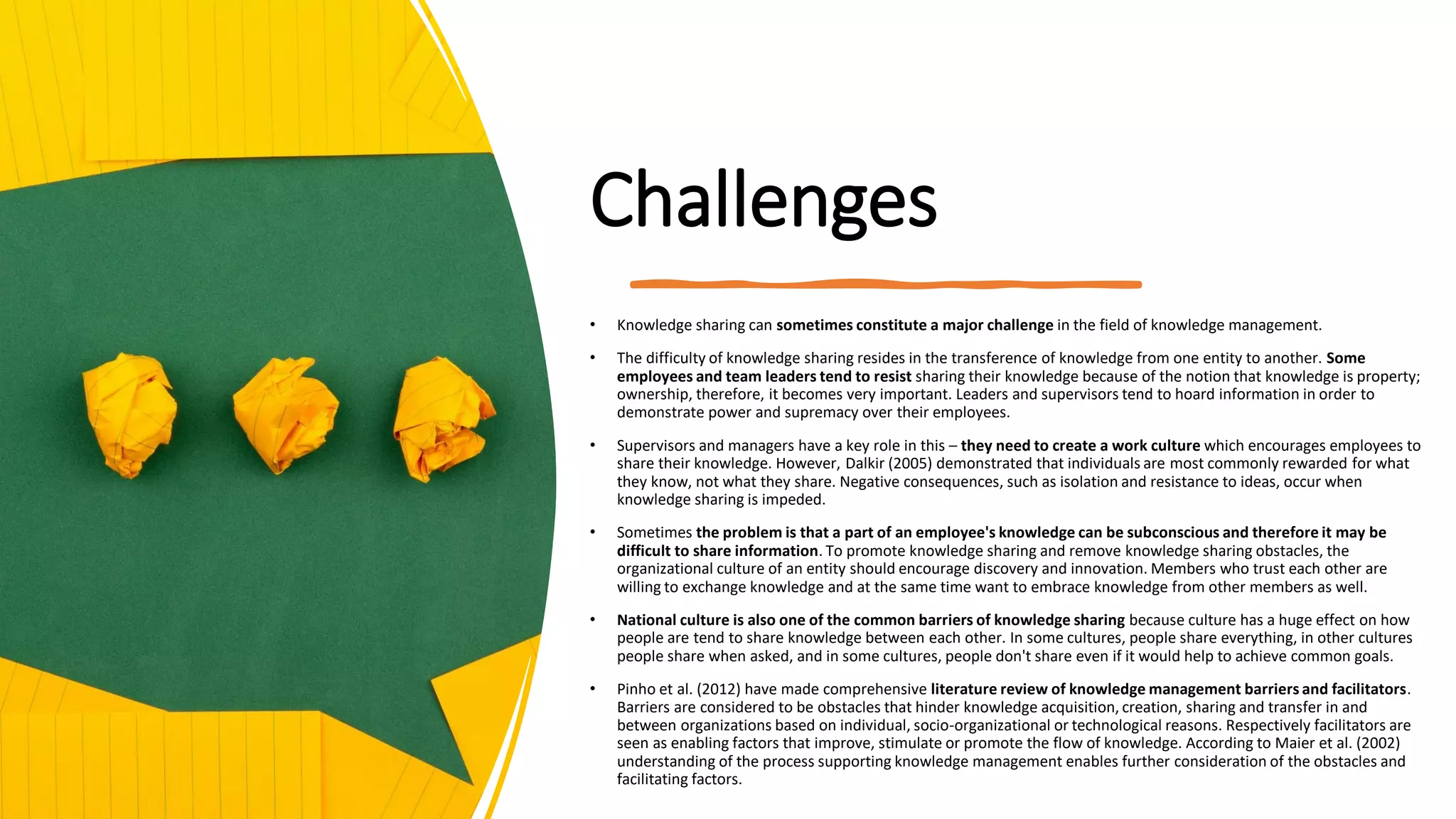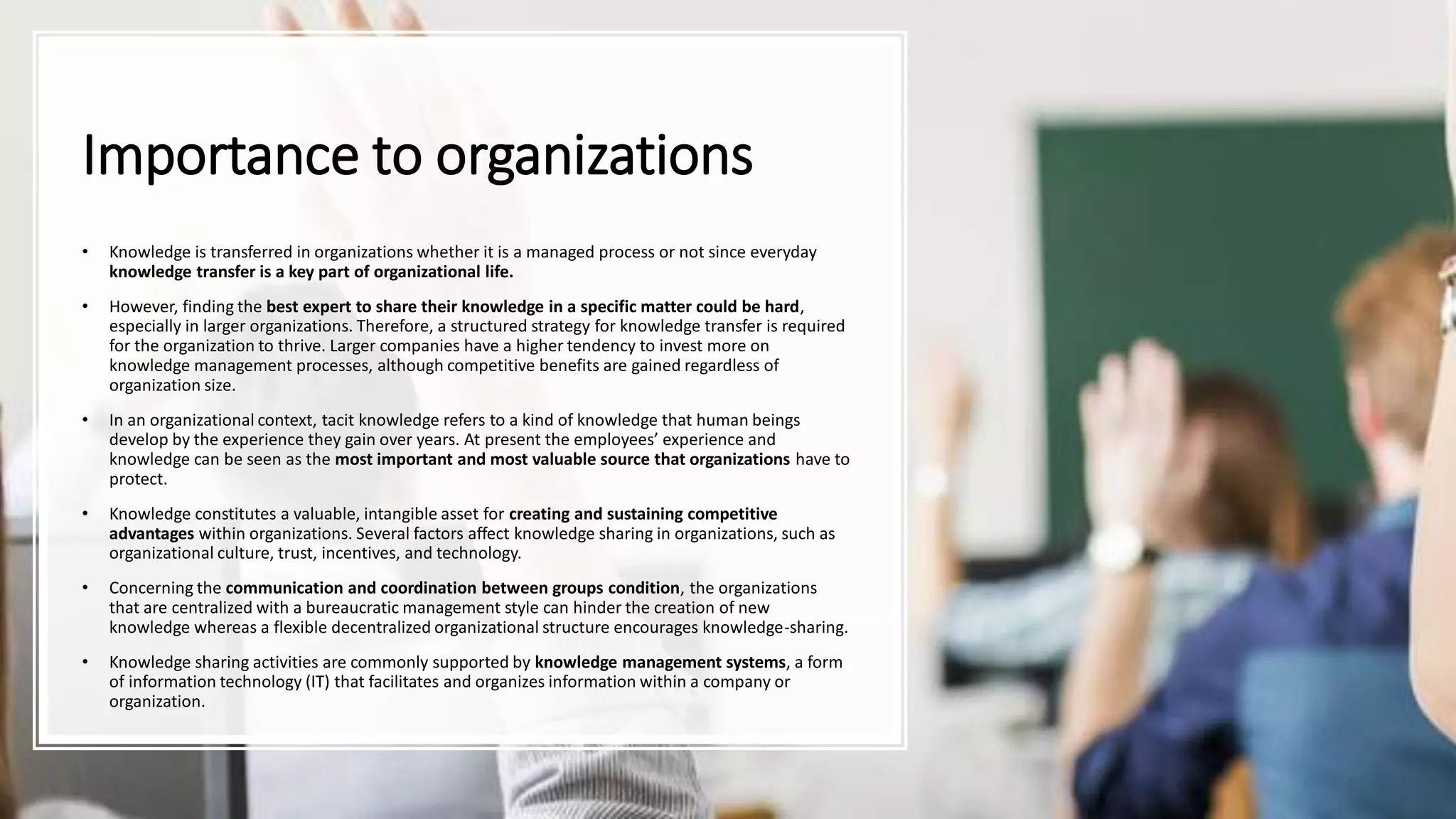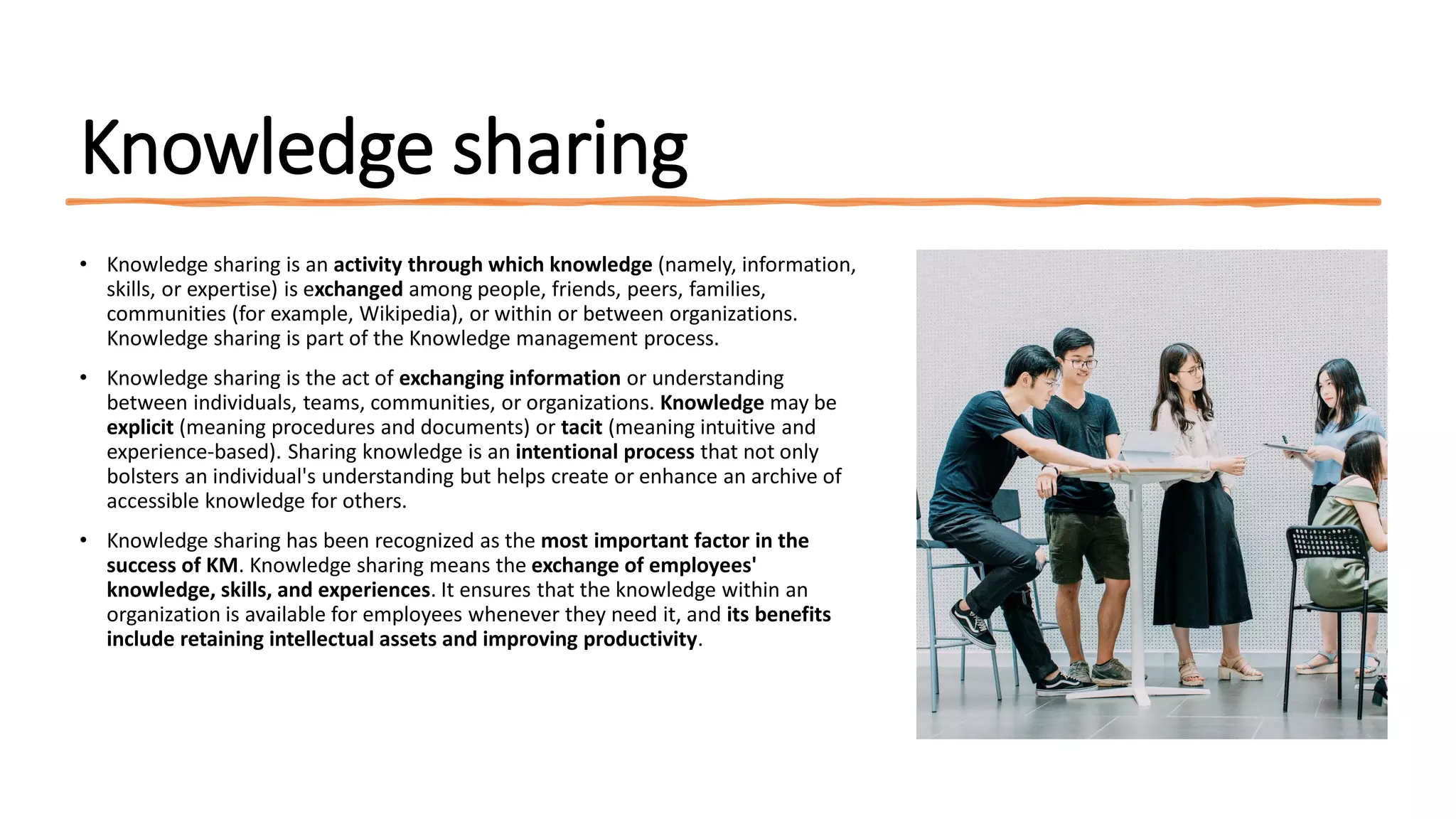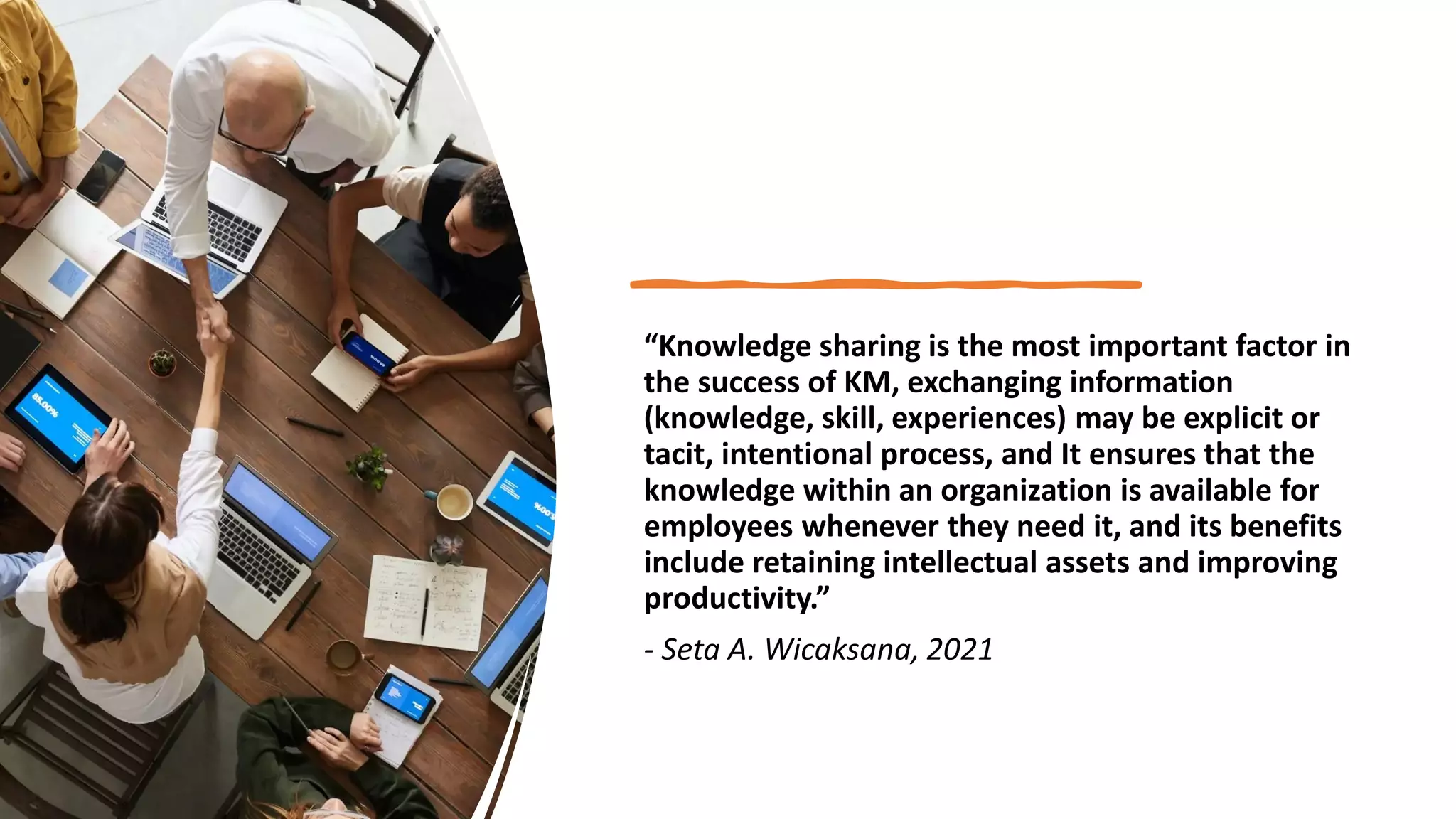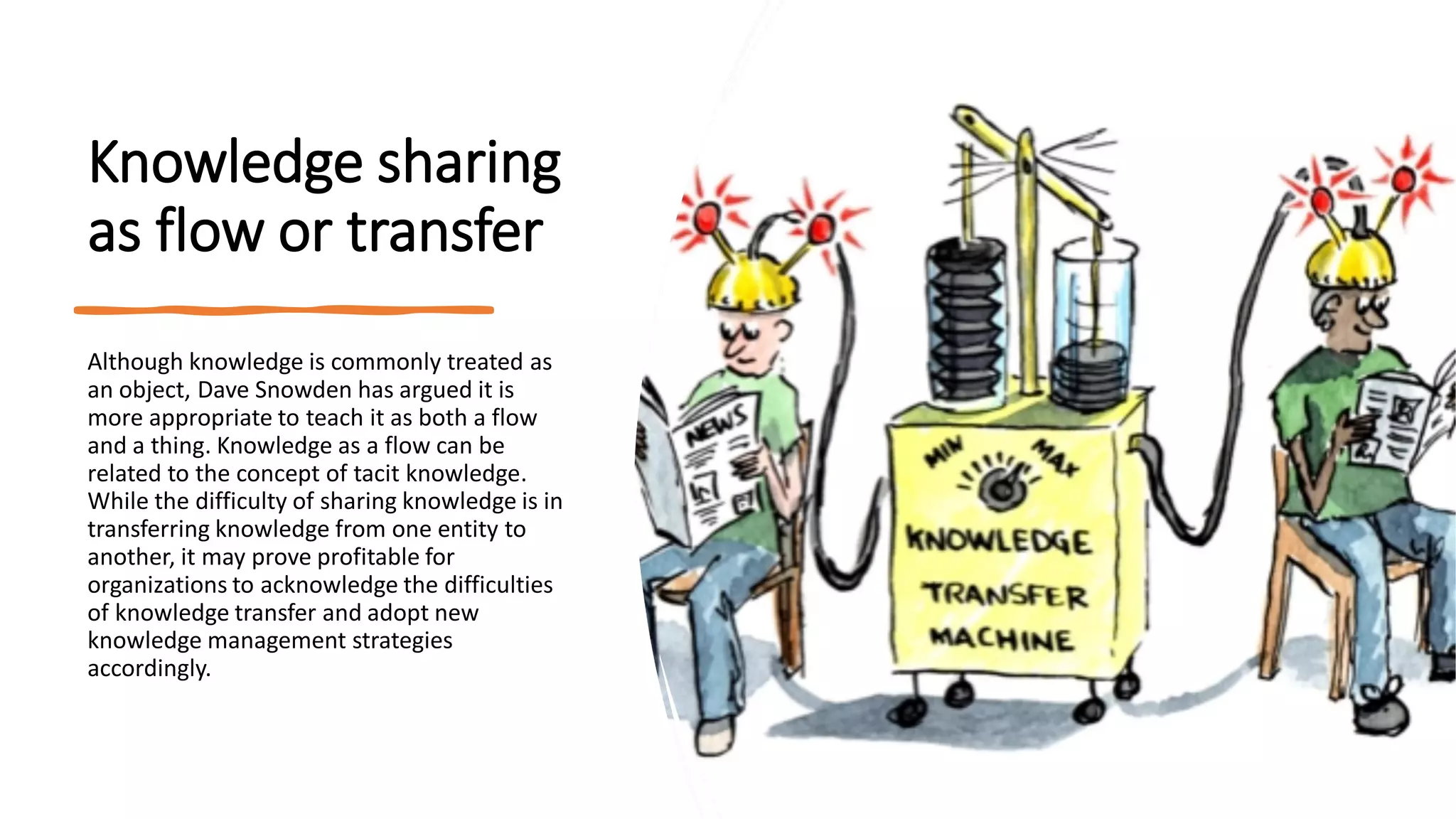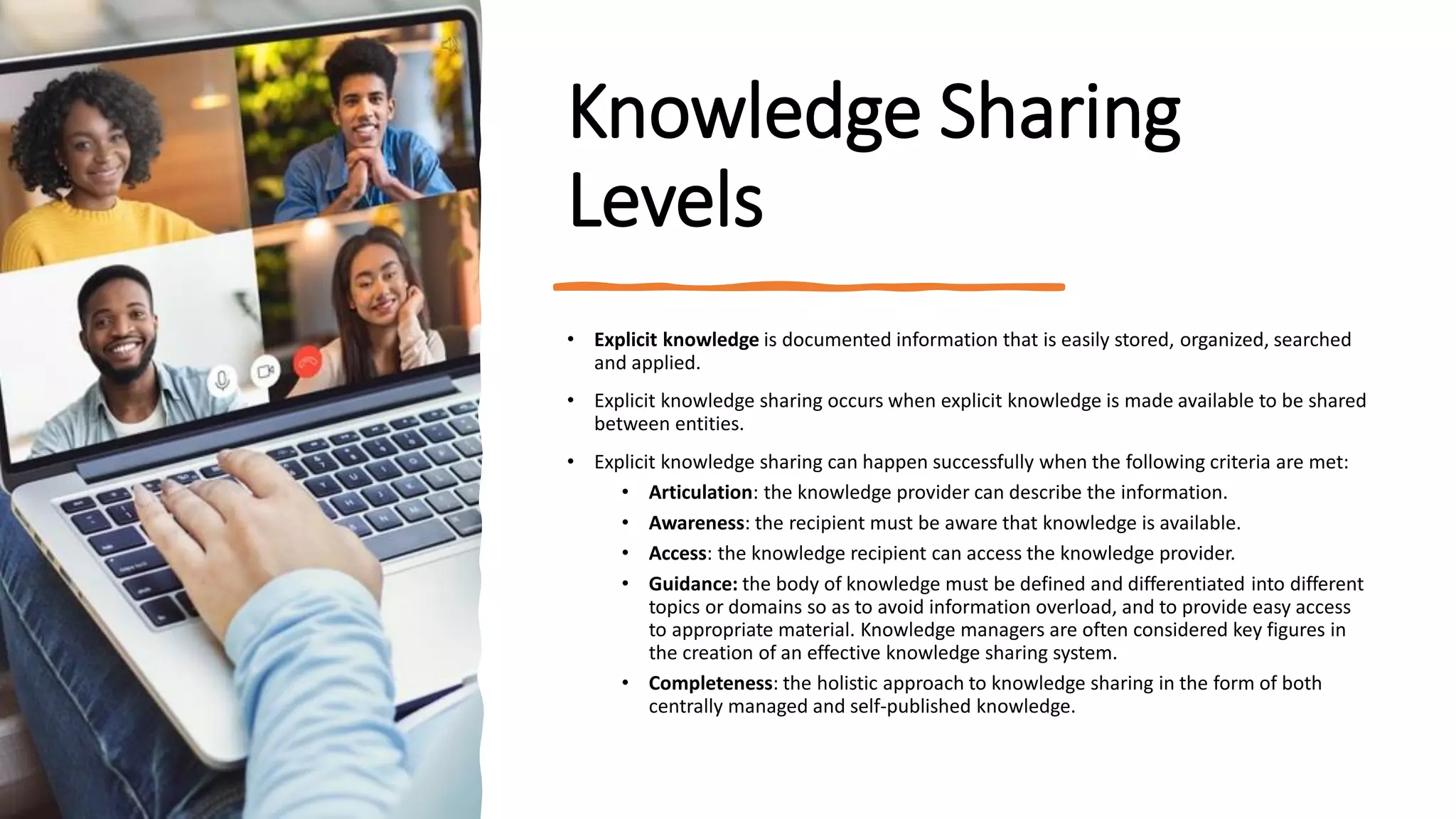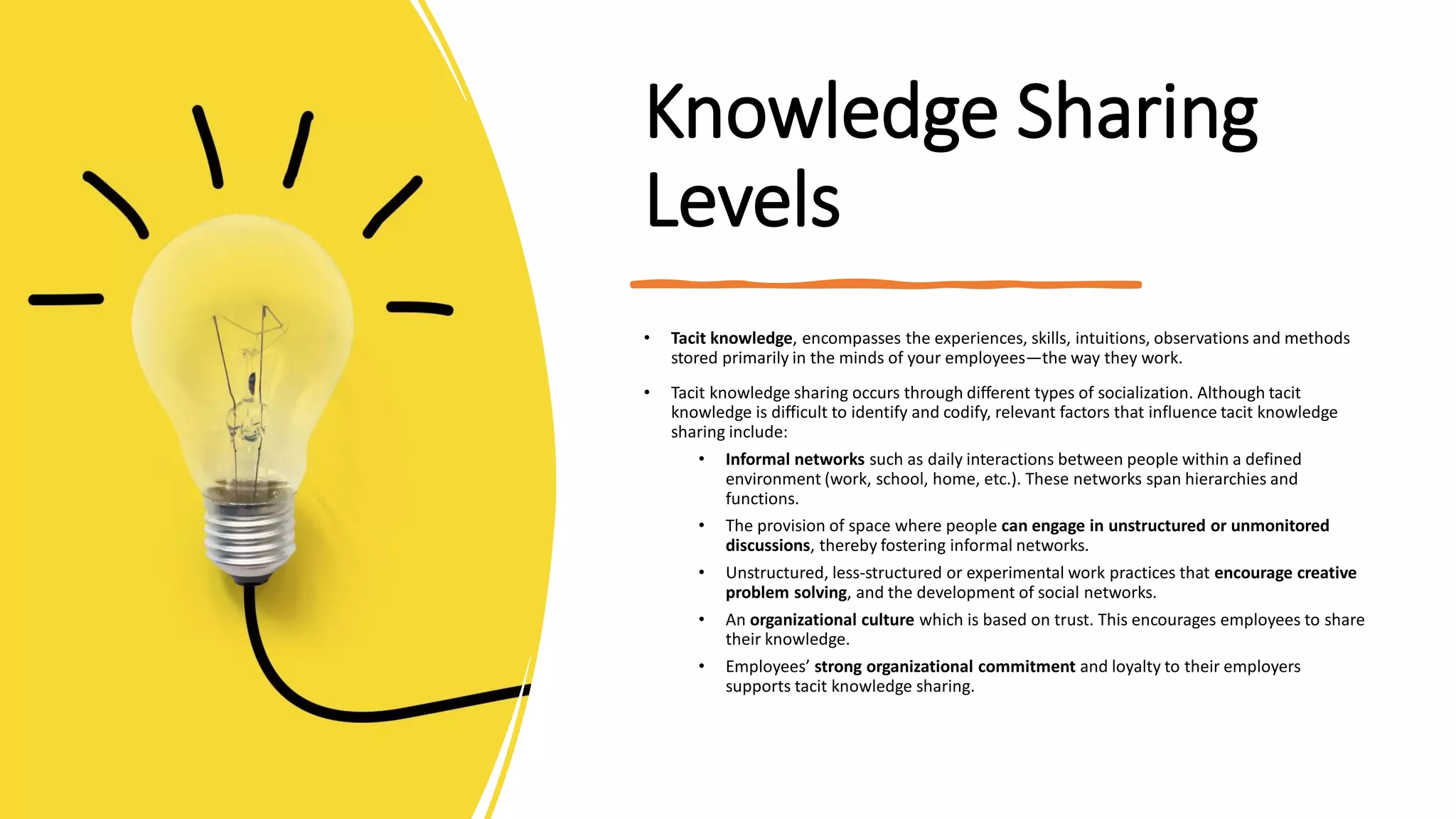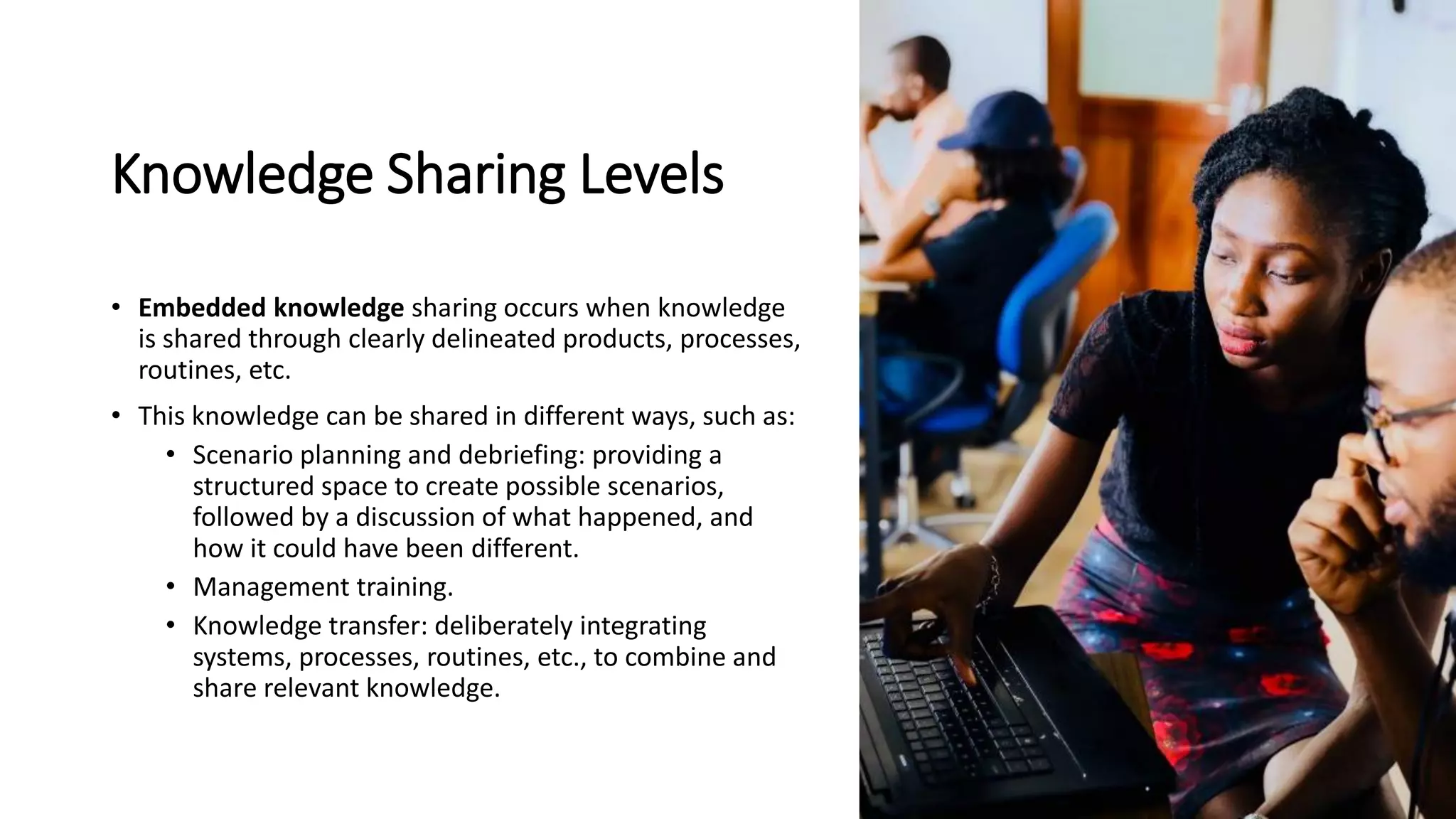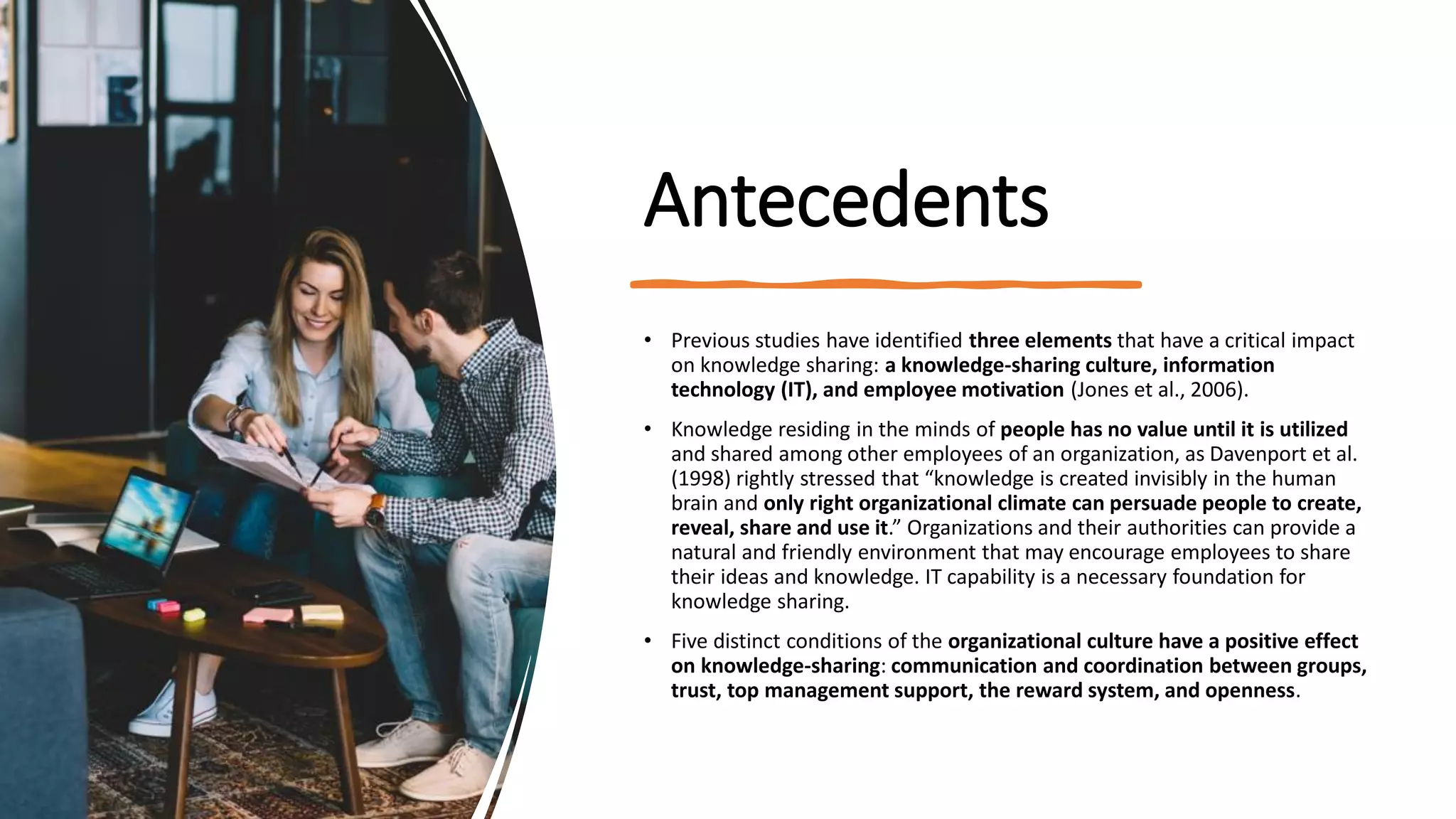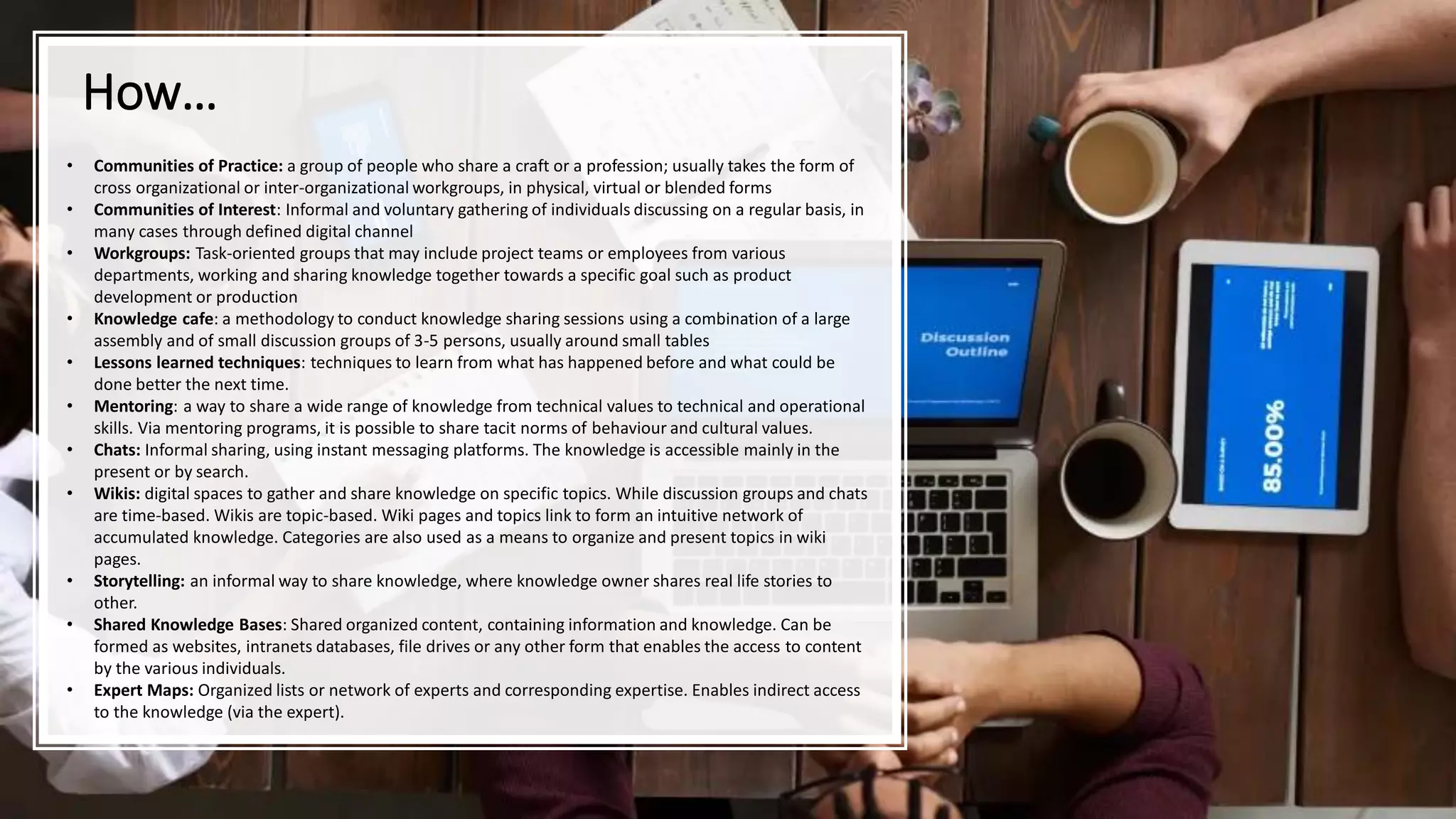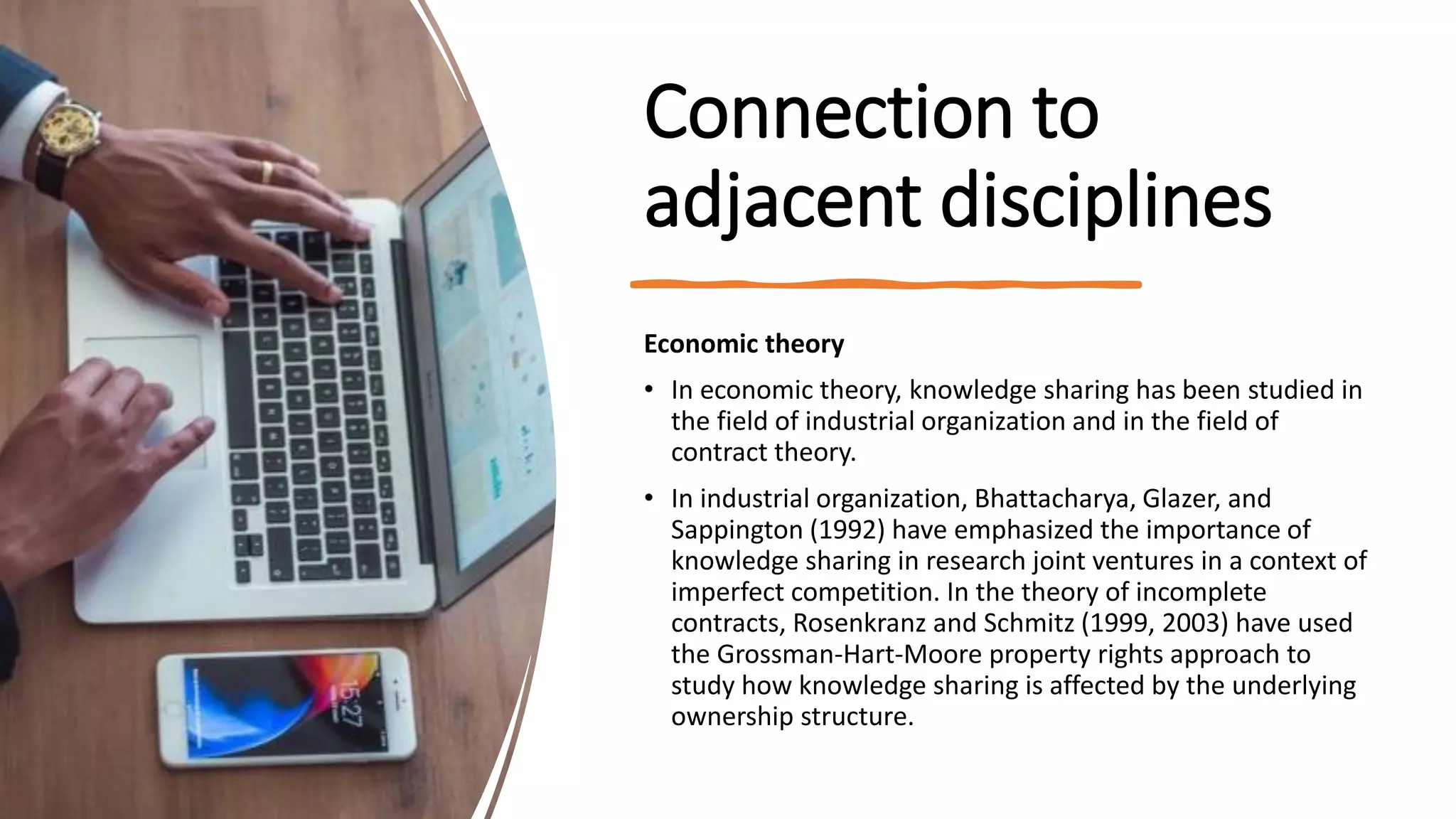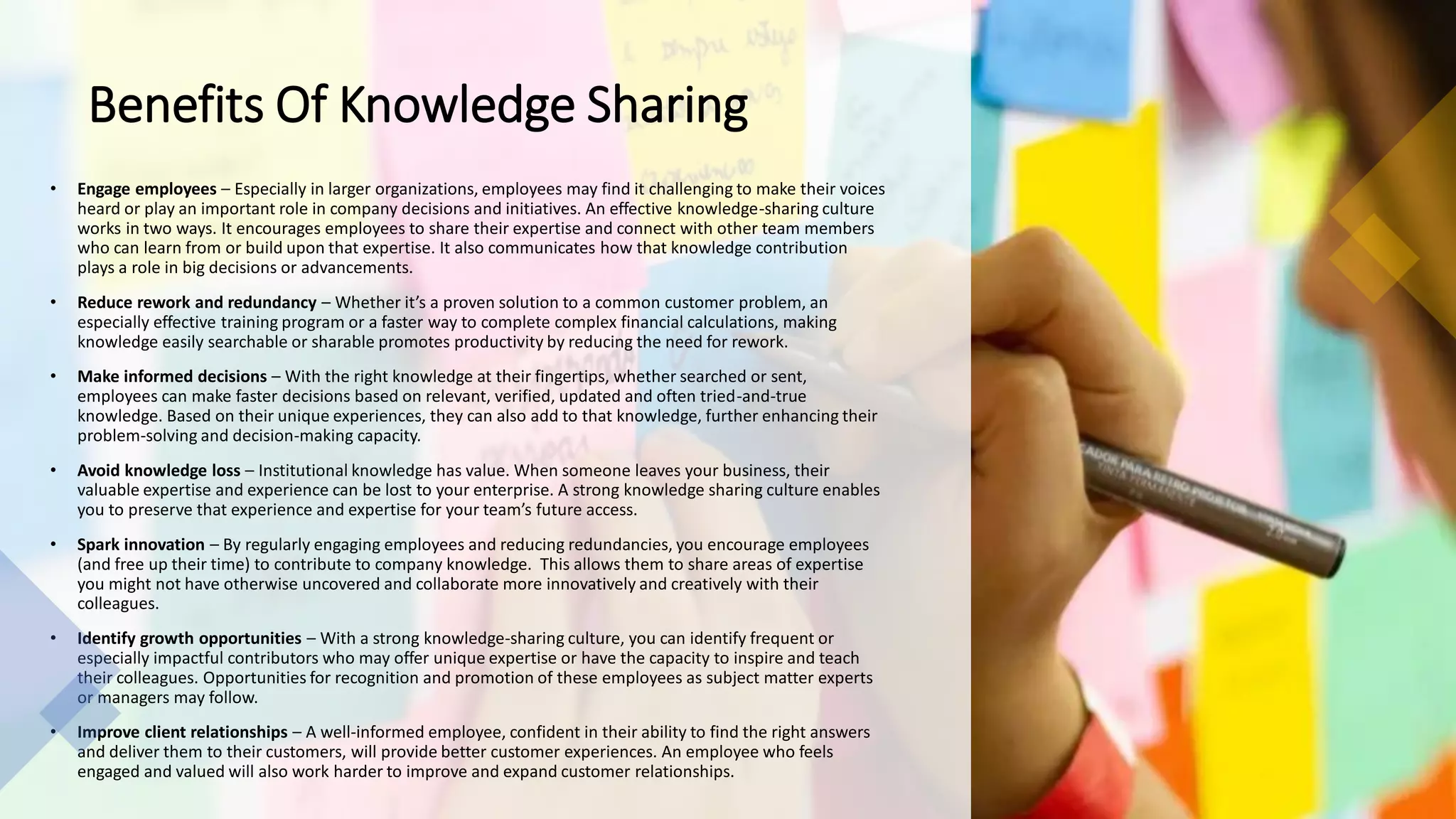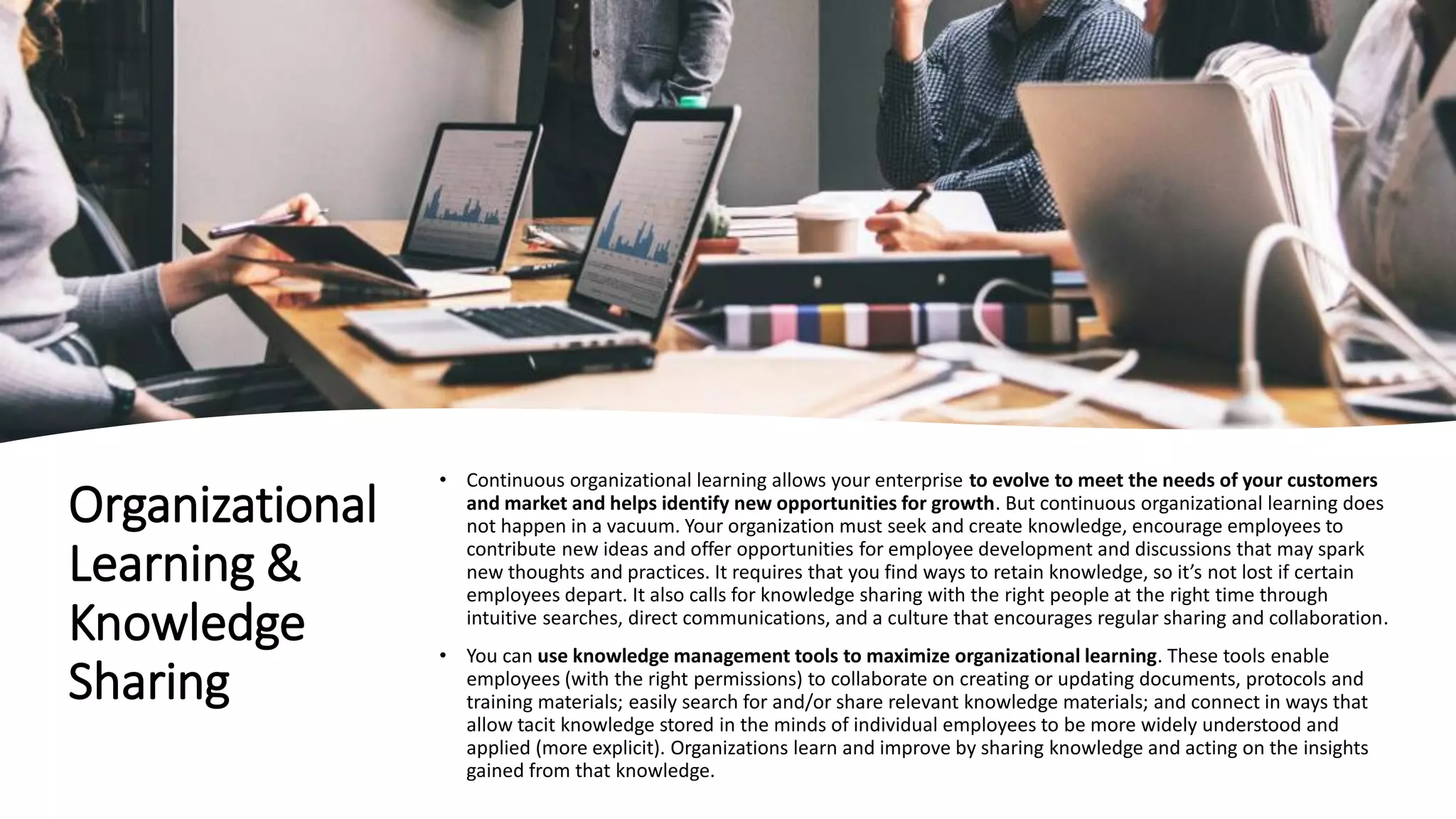The document discusses the critical role of knowledge sharing in enhancing the agility and adaptability of individuals and organizations, emphasizing its importance for growth and survival. It highlights challenges such as resistance to sharing knowledge due to ownership perceptions and cultural barriers, and outlines the various ways knowledge can be effectively shared. Furthermore, the document notes that a strong culture of knowledge sharing can lead to improved decision-making, innovation, and retention of institutional knowledge, while also identifying the need for structured knowledge management systems to facilitate this process.
